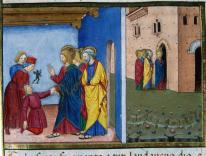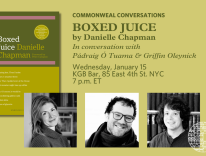Slate's recent article “The Myth of Gentrification” is the latest journalistic attempt to argue that gentrification is not really displacing the urban poor from their homes. The claim: “It’s extremely rare and not as bad for the poor as you think.”
You will not actually see poor people quoted in these stories because, well, that's anecdotal. So let's look at the data.
This school of thought relies heavily on work by Lance Freeman of Columbia University, who found that residents of low-income, gentrifying neighborhoods were statistically less likely to move out than were residents of poor communities that were not gentrifying. It's not surprising because the poor also want to live in neighborhoods that are safe and attractive.
But there is more to Professor Freeman’s work than that. In one talk I attended, he said he also found that poor households living in gentrifying neighborhoods “had an average rent burden of 62 percent,” which he said was “astronomical.” He added: “The people who were staying were paying exorbitant amounts of their income toward rent.” His work is no remedy for upper-middle-class guilt over gentrification.
Eventually, poor people paying exorbitant rents or doubling up in overcrowded apartments will often be forced to move to less costly housing or seek shelter for the homeless. In gentrifying neighborhoods, wealthier people will replace them. That’s no myth. It's gentrification.
The Slate article, like similar pieces that preceded it, also relies on 2002 research University of Washington economist Jacob Vigdor did in Boston. Vigdor also found that the poor were not moving out of gentrifying neighborhoods at a high rate. But beyond that, his 2002 paper is inconclusive. After 50 pages, it answers the title question--“Does Gentrification Harm the Poor?”—by saying “Rather than answer the question of whether gentrification harms the poor, this paper has illuminated the difficulties involved in arriving at an answer.”
Vigdor’s paper is hardly a ringing endorsement of the notion that gentrification is a myth. He suggests changes in public policy that would target households most vulnerable to pressure from gentrification—elderly renters, especially—for rent subsidies or special assistance in finding new places to live.
For those interested in getting to the bottom of this, I recommend Suleiman Osman’s 2011 book The Invention of Brownstone Brooklyn: Gentrification and the Search for Authenticity in Postwar New York. It’s a nuanced history that traces gentrification’s path from the idealistic left-wing brownstoners of the 1960s to the much-parodied yuppies of later decades. As he portrays it, the relationship between the brownstoners and the poor was complex. At times, it included political alliances (sometimes against blue-collar, largely Irish and Italian residents of the brownstone neighborhoods). But there were also heavy-handed steps taken to force the poor out of their potentially valuable rooming houses, followed by much guilt.
Anyone who has walked the streets of Brownstone Brooklyn before and after will know that poor and lower-middle-class people were eventually displaced.


